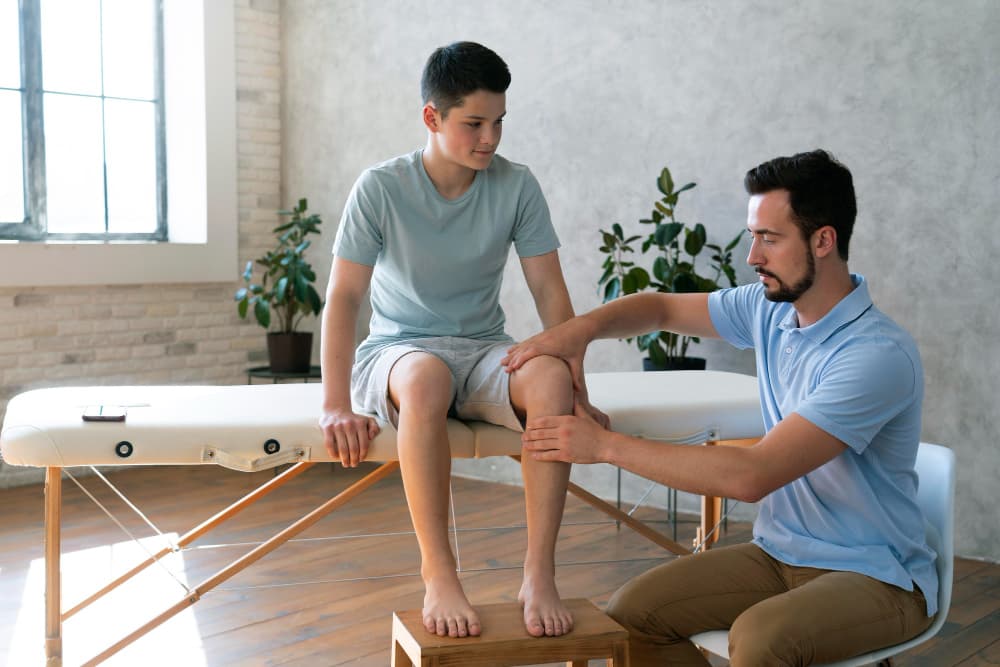Realignment Osteotomy
Realignment osteotomy is a surgical procedure designed to correct structural abnormalities or deformities in the bones, particularly in joints. The term "osteotomy" refers to the surgical cutting or reshaping of bone, and "realignment" emphasizes the goal of restoring proper alignment. This procedure is commonly employed to address conditions such as malunions, nonunions, or osteoarthritis, where the natural alignment of bones is disrupted, leading to pain, impaired function, and joint instability. During realignment osteotomy, the surgeon carefully cuts and repositions the bone to restore normal alignment, facilitating improved joint mechanics and reducing stress on surrounding tissues. The procedure aims to alleviate pain, enhance joint function, and potentially delay or prevent the progression of degenerative joint diseases. Realignment osteotomy is often considered for patients who have not responded adequately to non-surgical treatments and may be an effective intervention to enhance overall musculoskeletal health.

Common reasons
- Malunions or Nonunions: When a bone heals improperly after a fracture (malunion) or fails to heal (nonunion), it can lead to misalignment. Realignment osteotomy helps correct these issues and restore proper bone alignment.
- Osteoarthritis: In cases of osteoarthritis, where joint cartilage breaks down, the bones may become misaligned, causing pain and reduced mobility. Realignment osteotomy can be performed to redistribute forces within the joint, alleviating symptoms and delaying the progression of arthritis.
- Joint Instability: Ligament injuries or laxity can result in joint instability, leading to abnormal bone positioning. Realignment osteotomy can stabilize the joint by adjusting the bone alignment, reducing instability, and preventing further damage.
- Congenital Deformities: Some individuals may be born with congenital deformities or abnormalities that affect bone alignment. Realignment osteotomy can correct these conditions and improve overall function.
- Post-Traumatic Deformities: Severe injuries to the bones and joints, such as fractures and dislocations, can result in long-term deformities. Realignment osteotomy is a corrective measure to address these deformities and restore normal joint anatomy.
- Joint Preservation: In cases where joint preservation is essential, realignment osteotomy can be used to redistribute loads on the joint, promoting more even wear and reducing the risk of premature joint degeneration.
- Sports Injuries: Athletes who sustain injuries, especially those involving the lower extremities, may benefit from realignment osteotomy to restore optimal biomechanics and facilitate a faster return to sports.
After undergoing realignment osteotomy, patients enter a carefully managed post-surgery recovery process to optimize healing and ensure the success of the procedure. Typically, patients are closely monitored in the immediate postoperative period, with attention to pain management, wound care, and the prevention of complications such as infection or blood clots. Physical therapy plays a crucial role in the rehabilitation process, focusing on gradually restoring joint mobility, muscle strength, and overall functionality. Weight-bearing restrictions may be imposed initially, and patients often use assistive devices like crutches or walkers to facilitate mobility. Follow-up appointments with the orthopedic surgeon are scheduled to assess progress, monitor healing, and make any necessary adjustments to the rehabilitation plan. The recovery timeline varies depending on the extent of the realignment and the specific surgical techniques employed, but patients are typically encouraged to actively participate in their rehabilitation to achieve optimal outcomes. Adherence to prescribed rehabilitation exercises, medications, and activity restrictions is crucial for a successful recovery and the long-term benefits of realignment osteotomy.